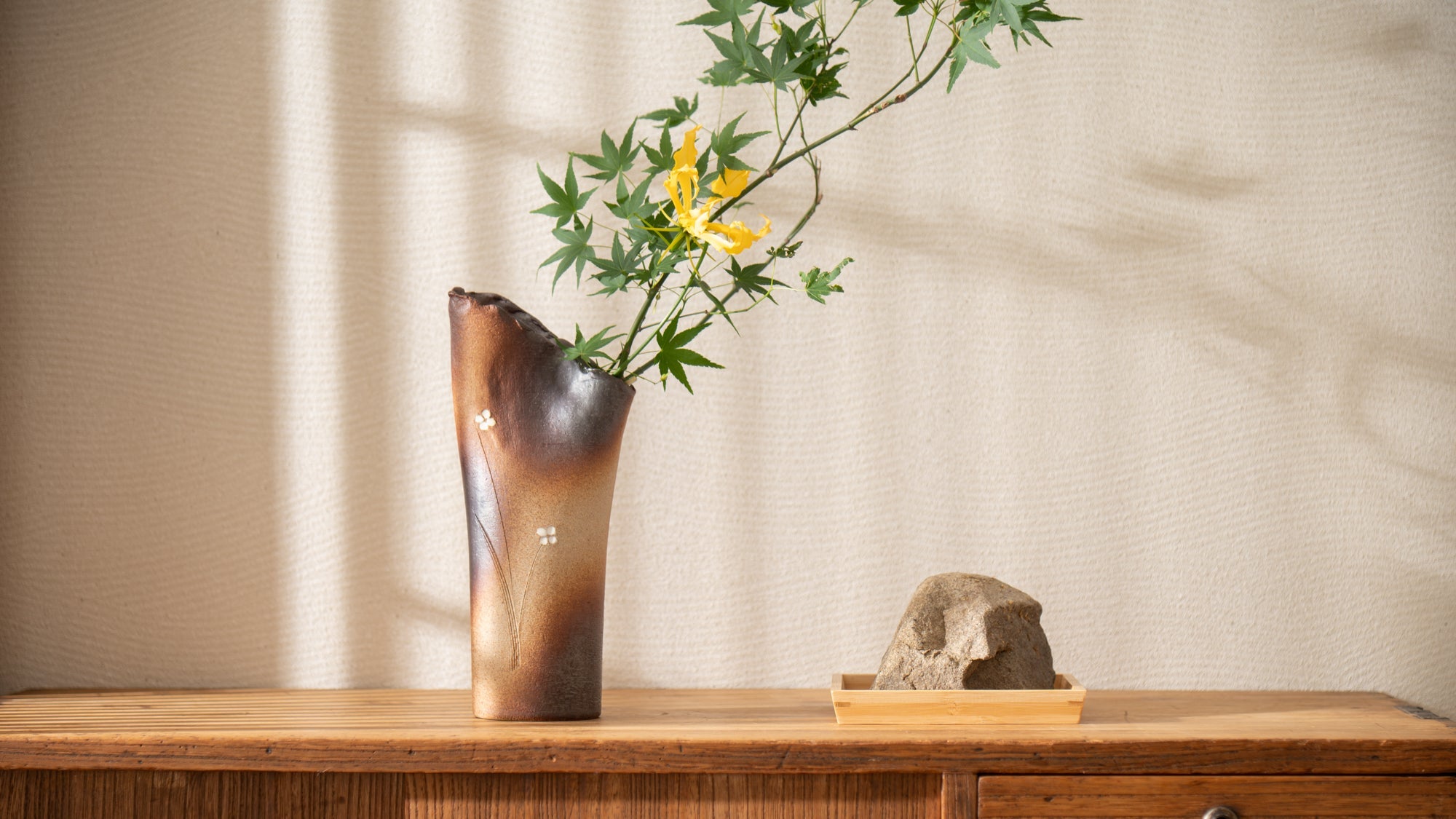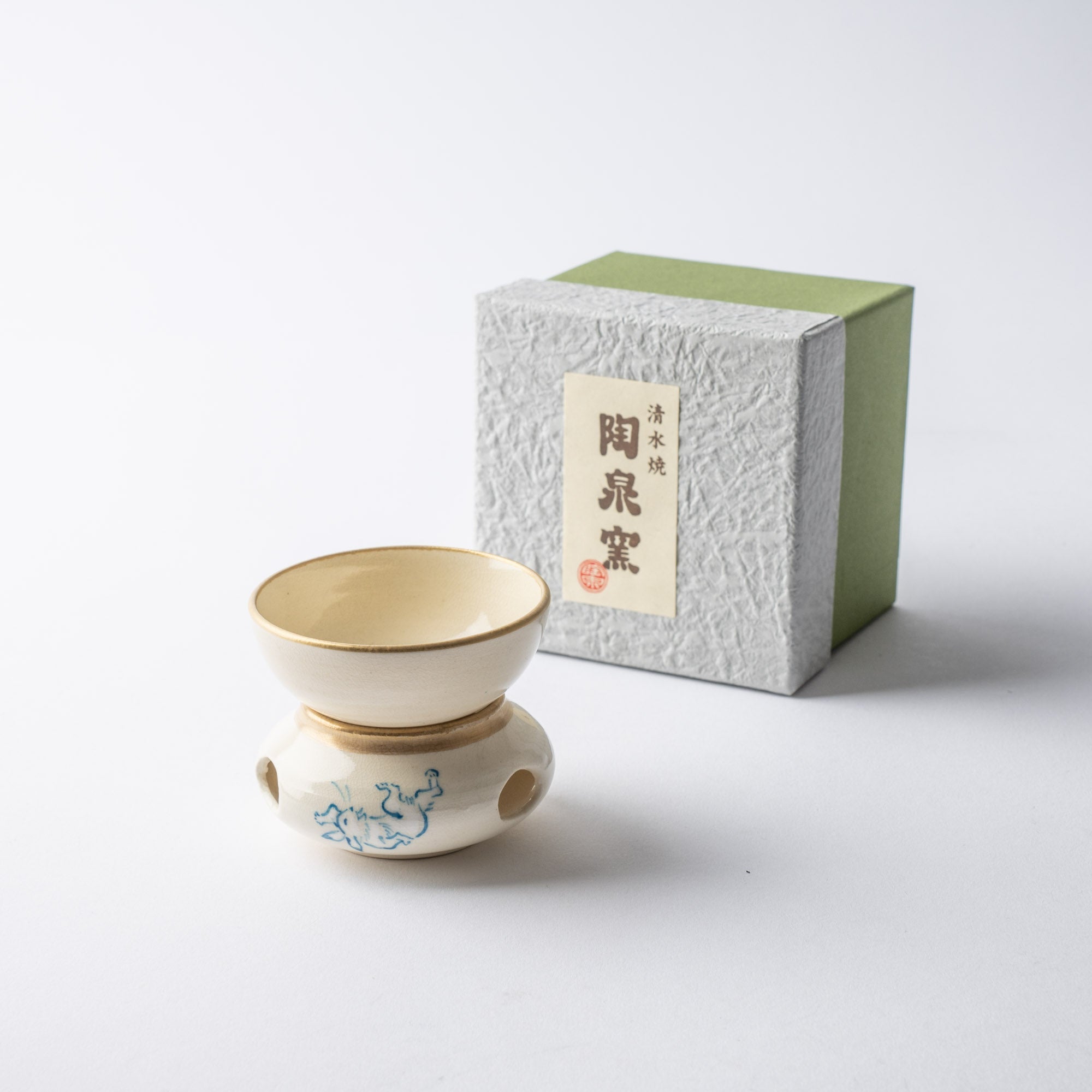
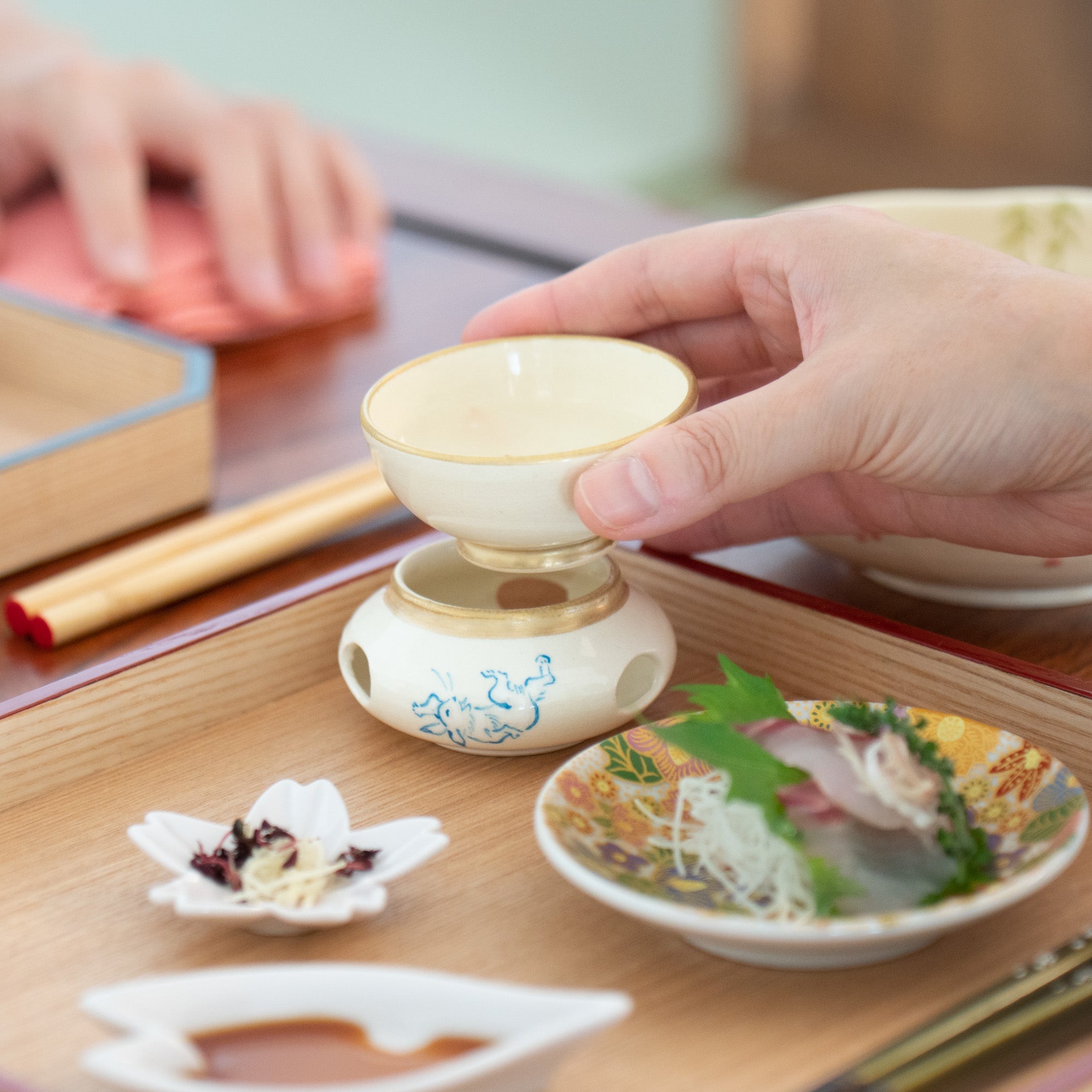
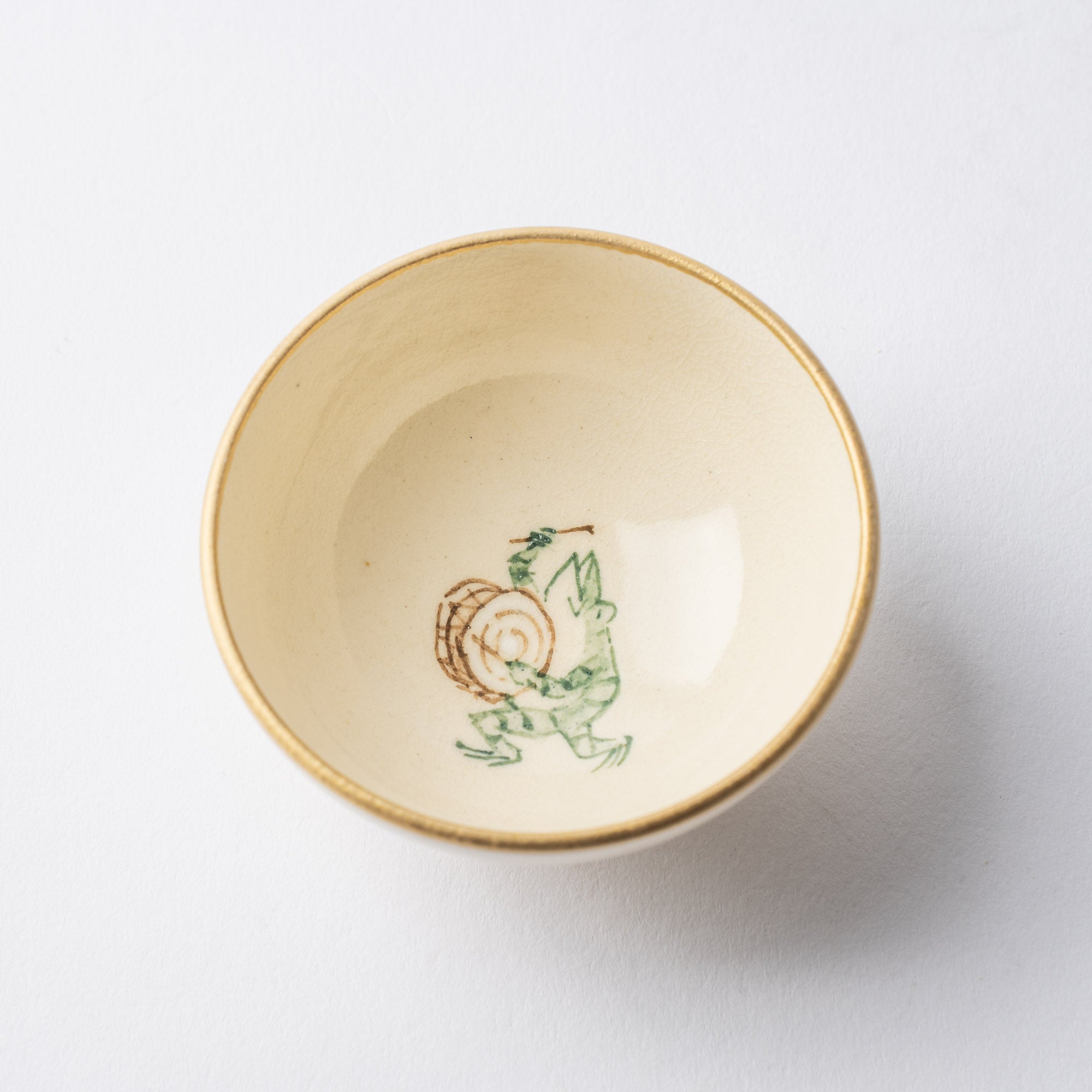
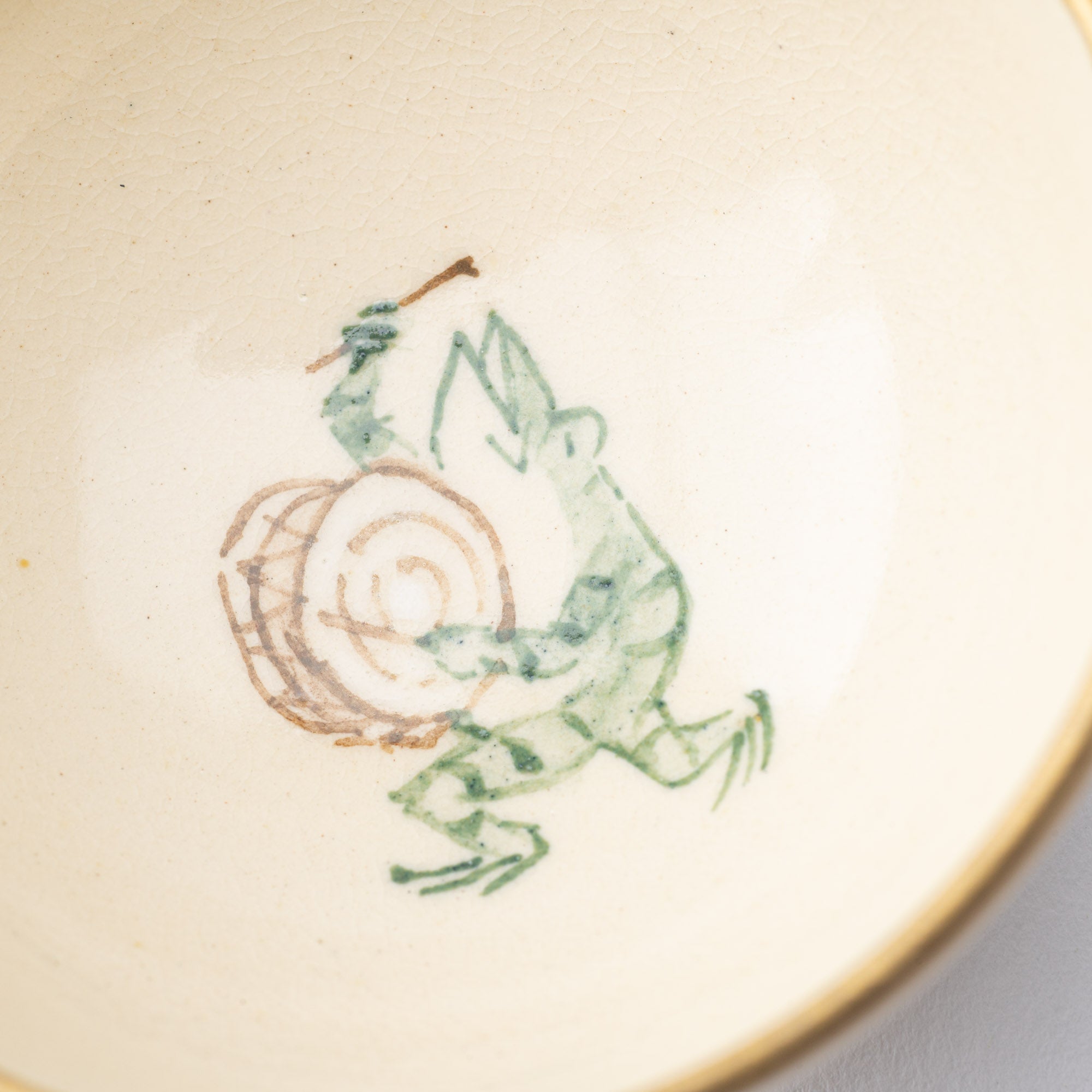
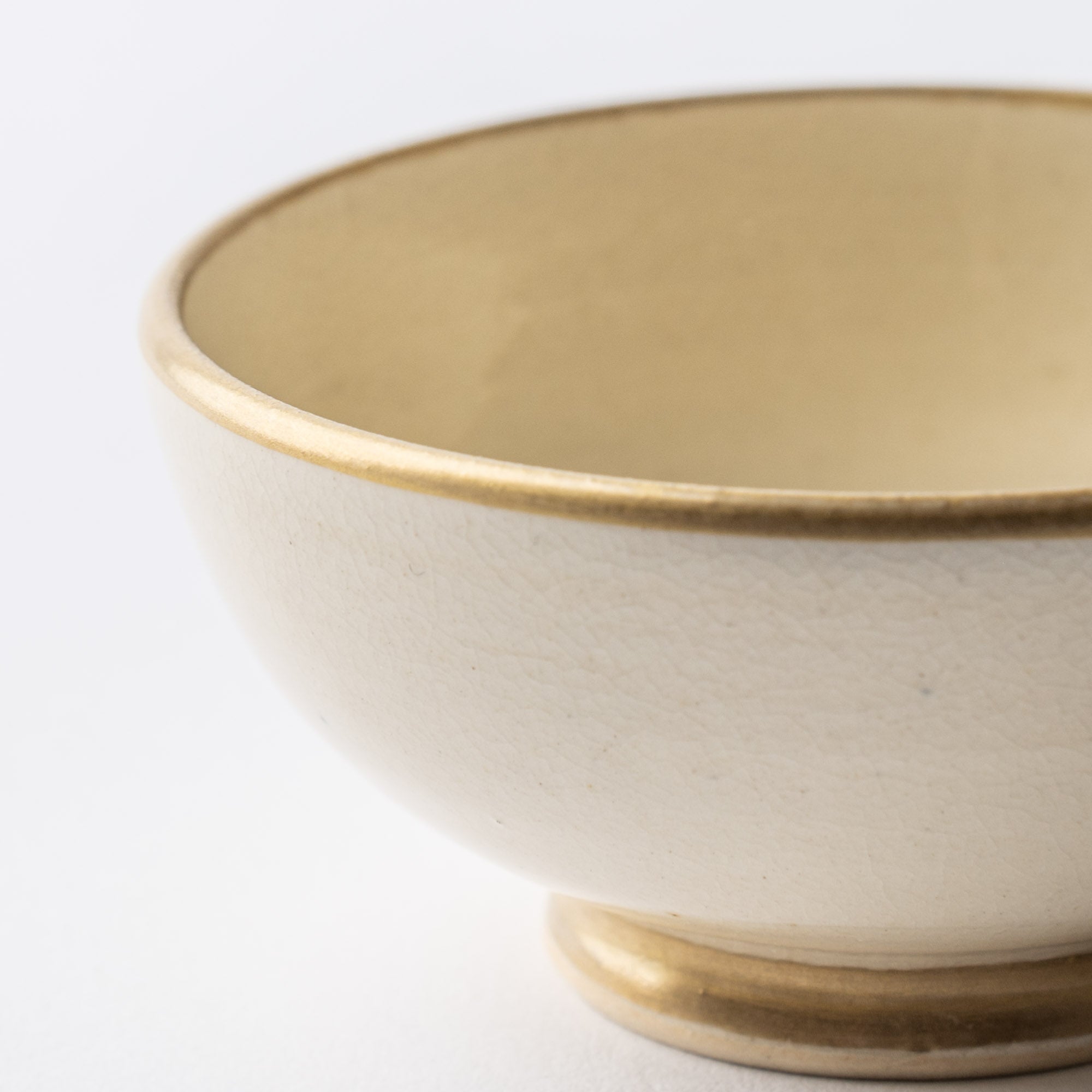
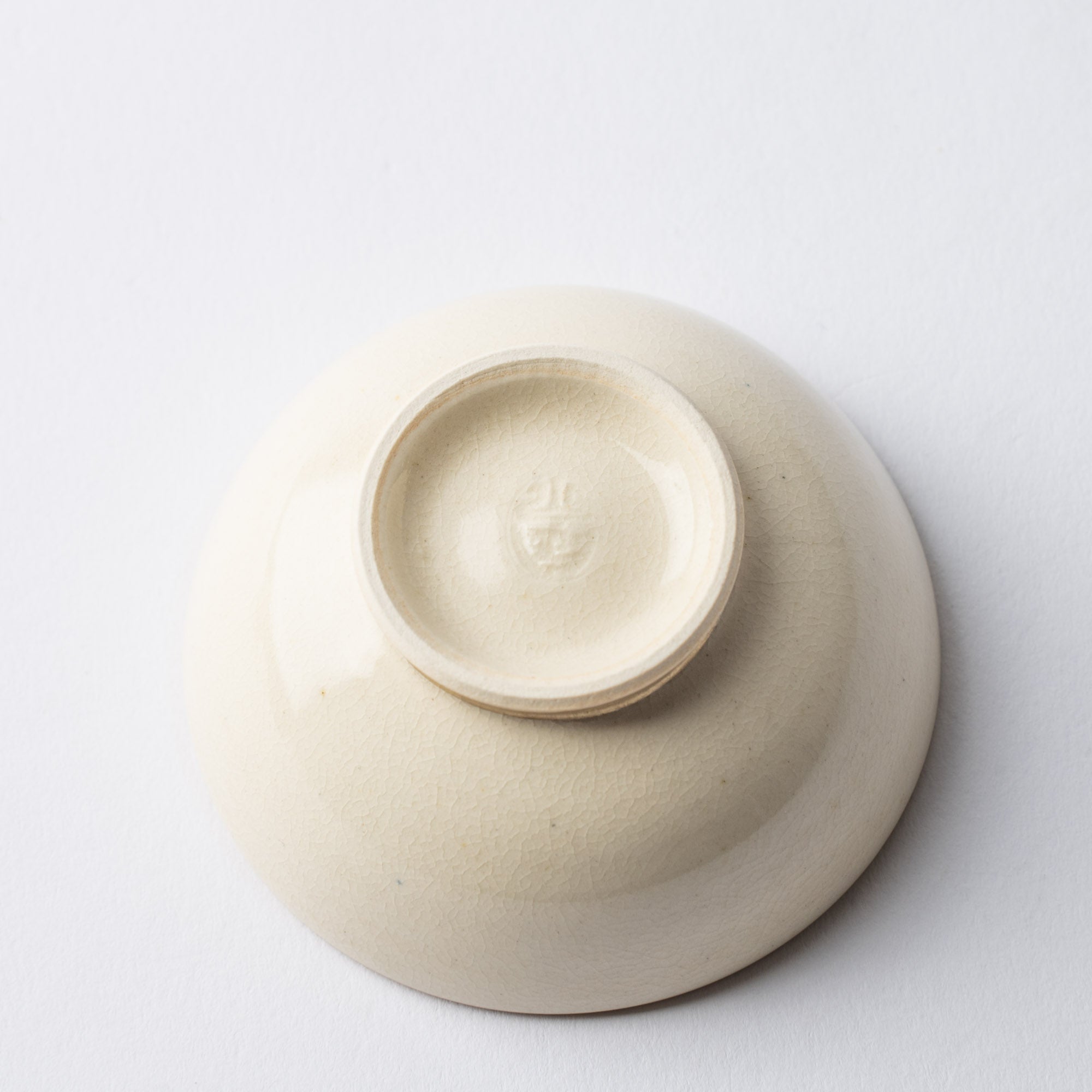
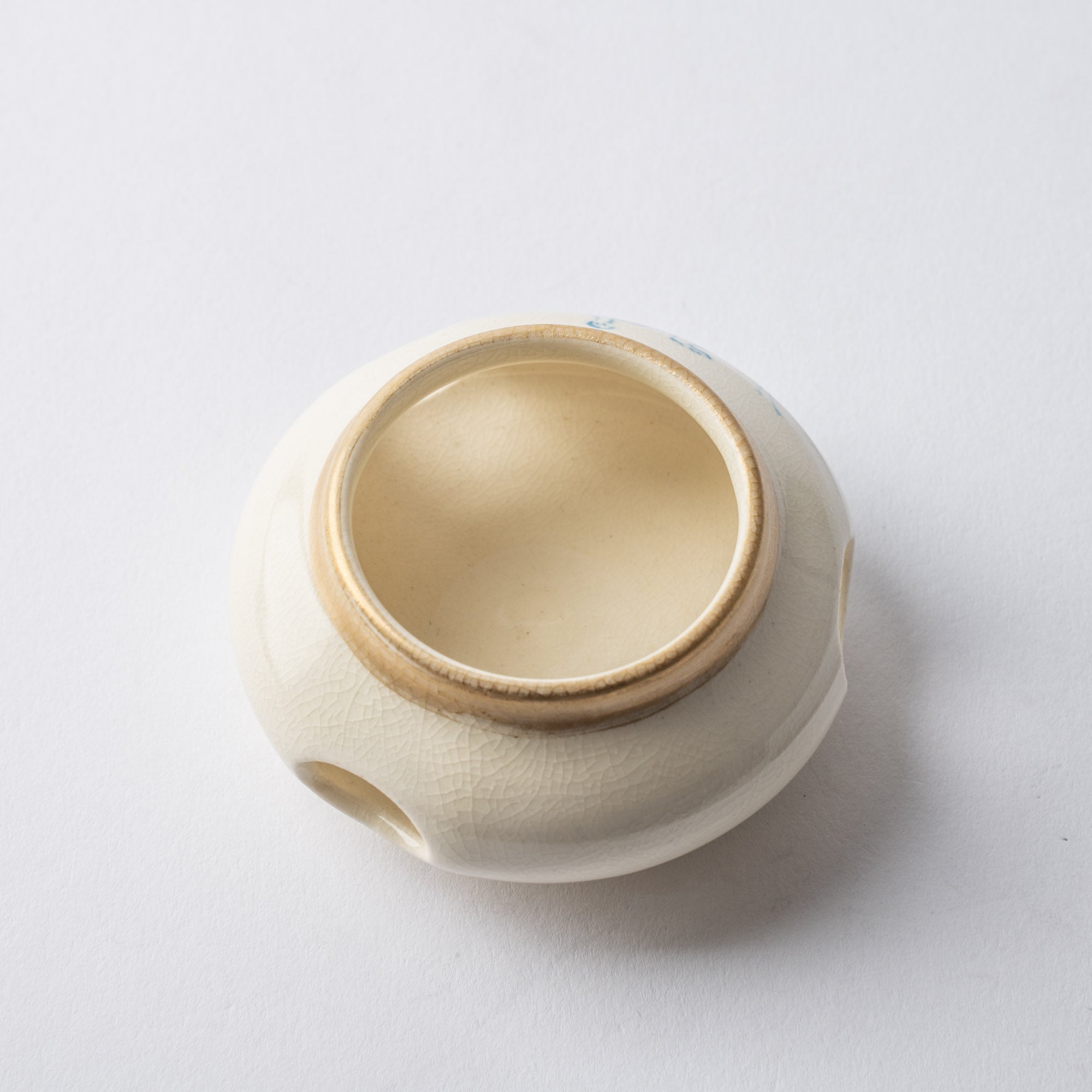
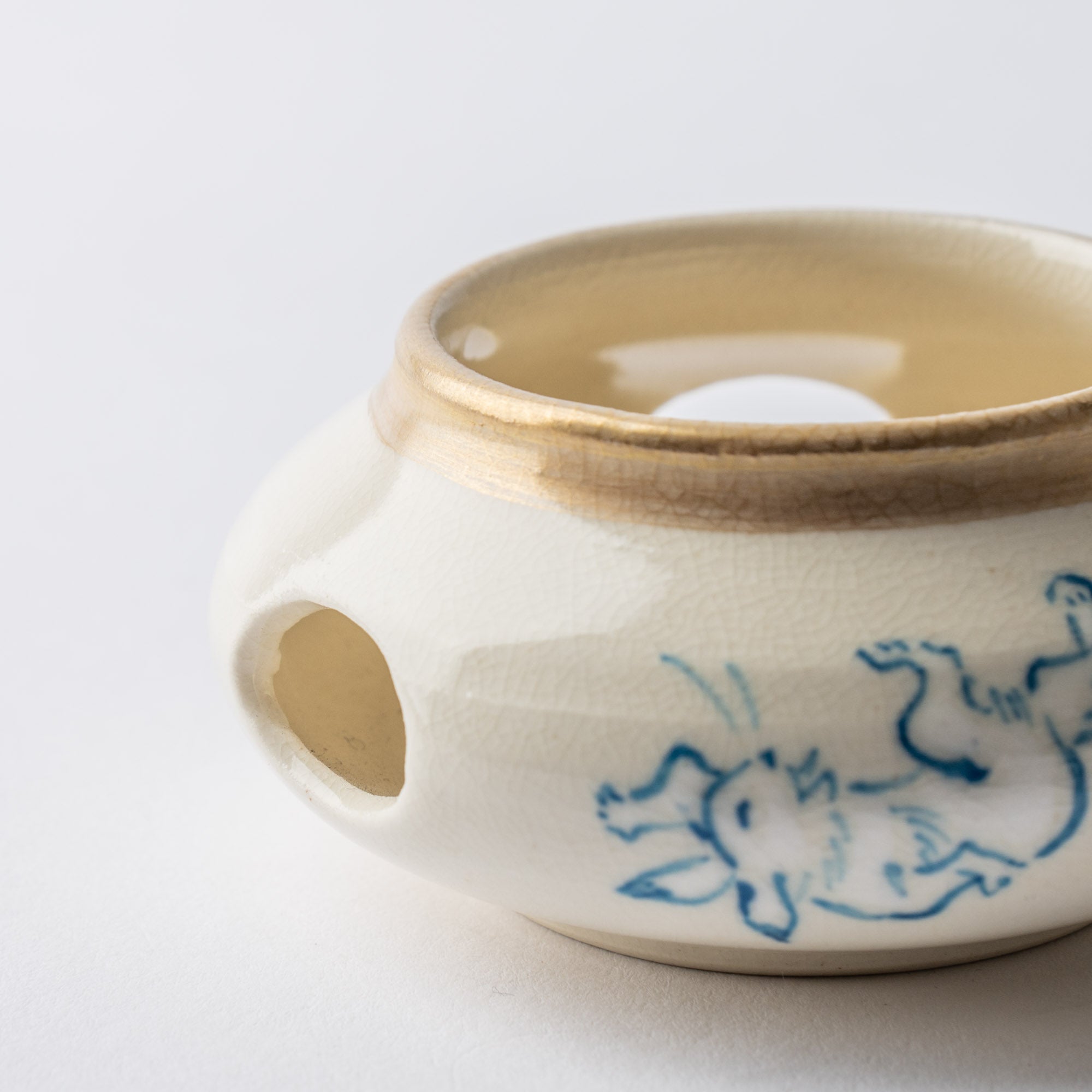
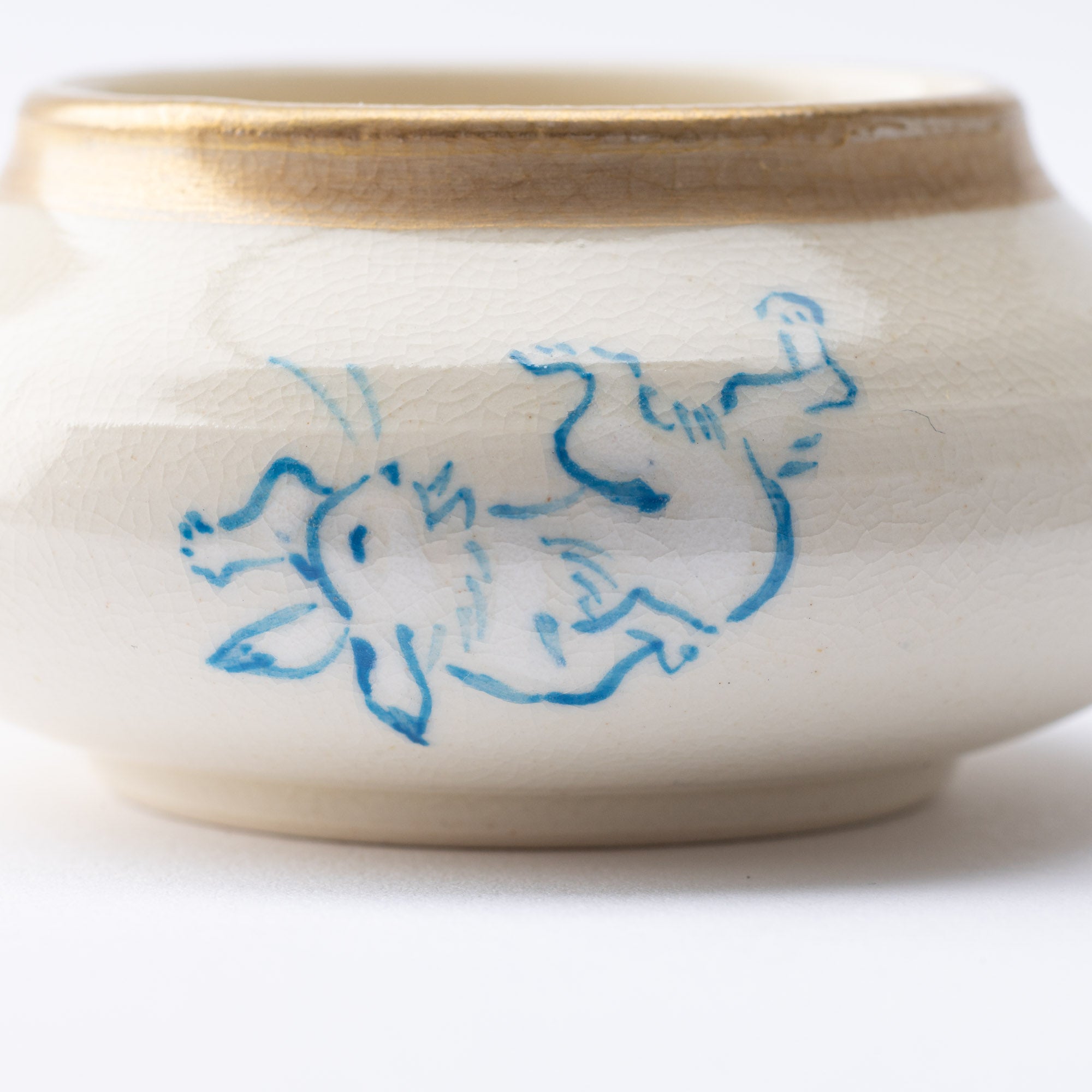
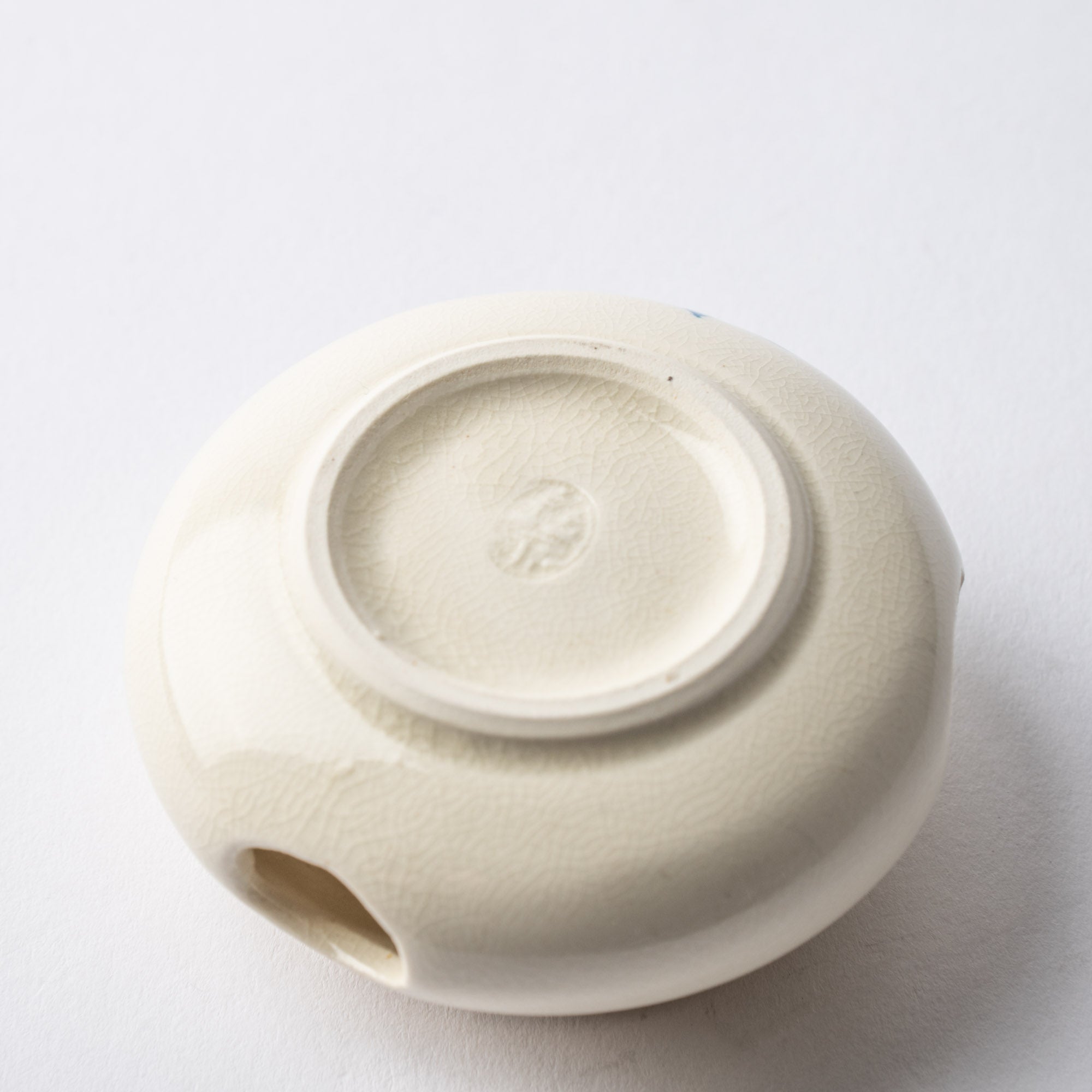
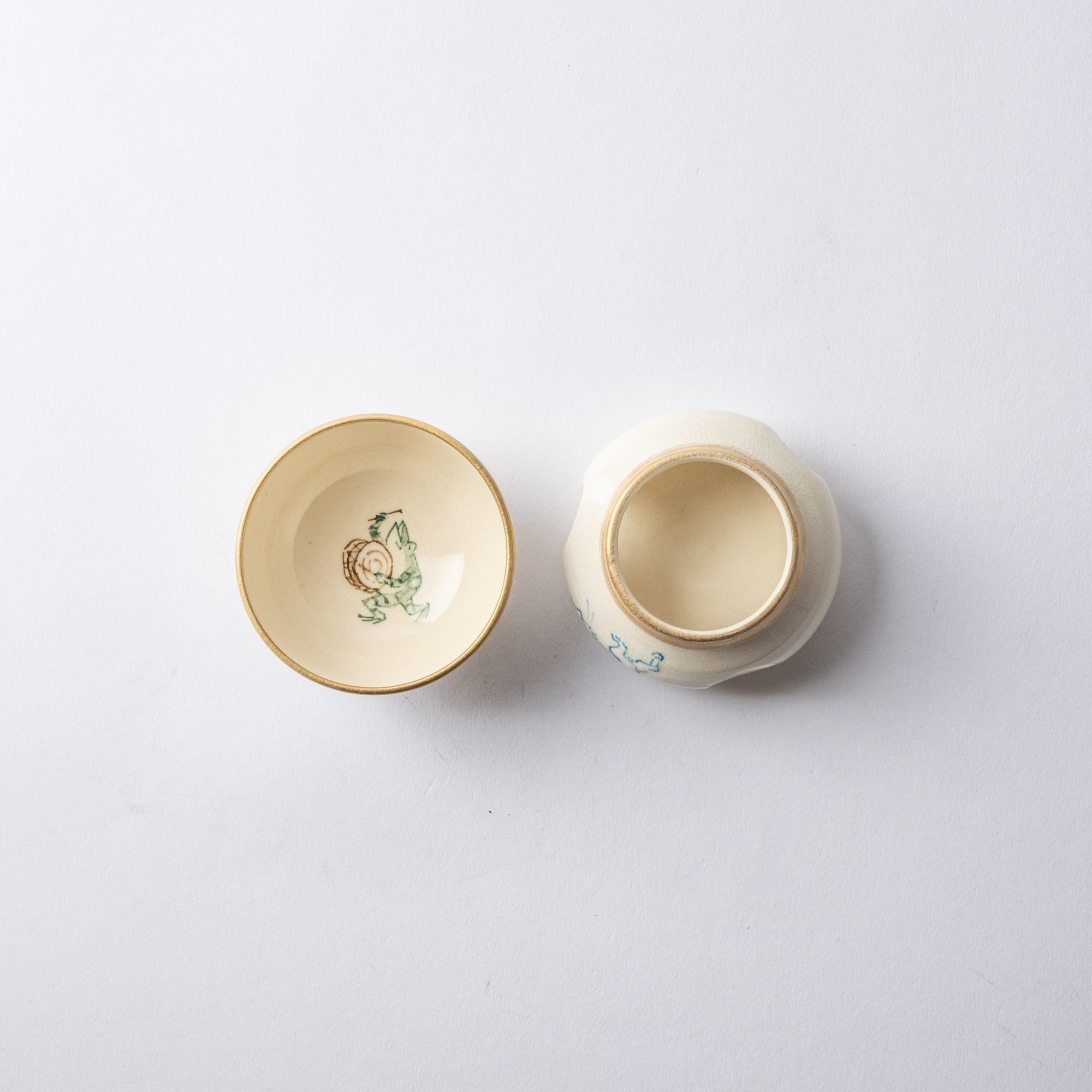

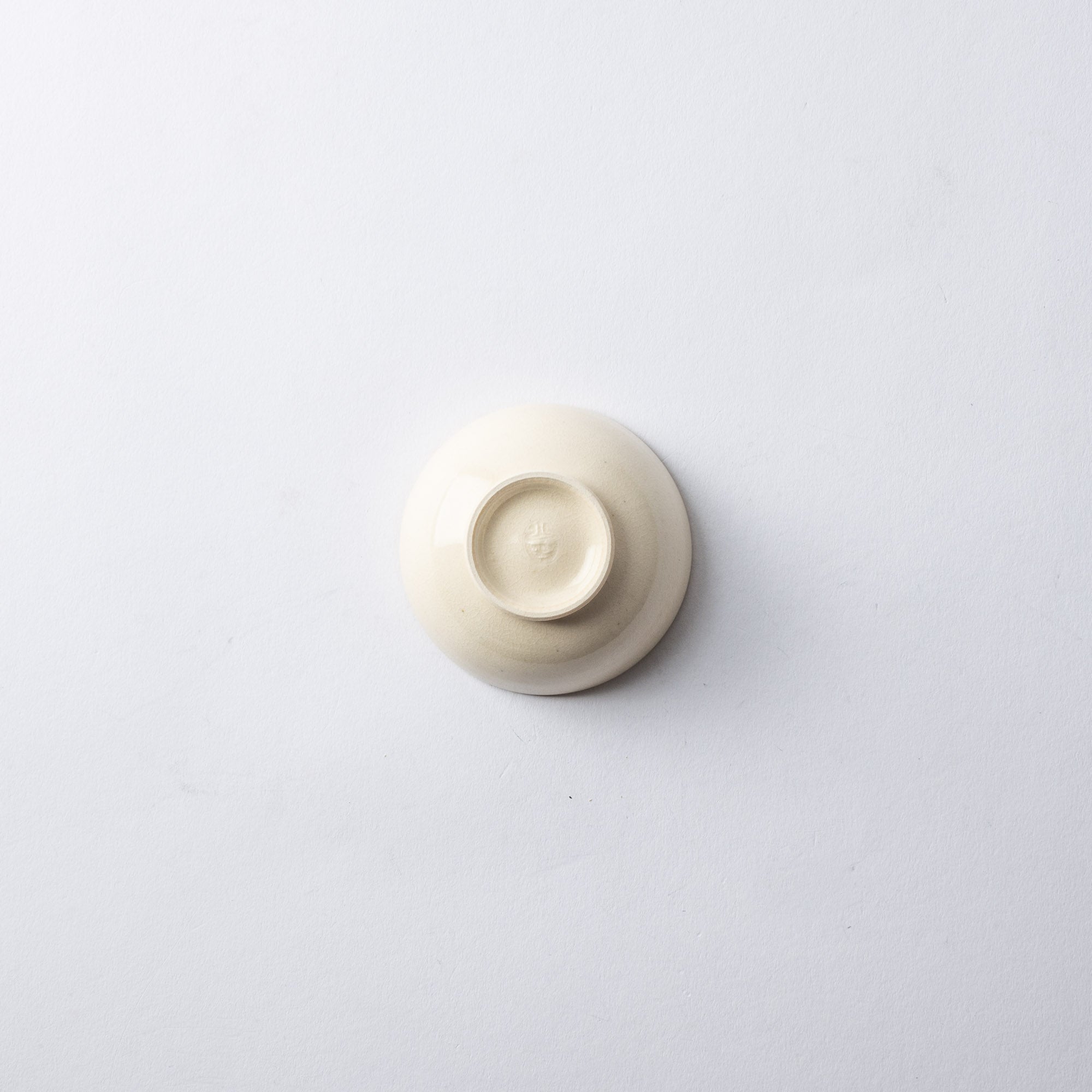
Kozan-ji Temple Choju Giga Sakazuki Flat Sake Cup with Stand
Estimated Shipping Widget will be displayed here!
This unique Sakazuki flat sake cup with a stand displays the image of the famous illustrated scroll named "Choju Giga," which is a caricature picture scroll depicting anthropomorphic animals and their playfulness, dating from the mid-12th to mid-13th centuries. You can enjoy the company of playful rabbits, frogs, and a fox, entertaining your everyday drinking experience.
Featuring the distinctive “nami-yu” glaze, which is made from the ashes of the Kyoto forest, it has a natural base color of yellowish cream-white. The paintwork is done by individual Japanese-style painters, pursuing their own originality and depth beyond the expectations for a mere decoration. The design is from the picture scrolls is designated as a Japanese national treasure in Kozan-ji Temple in Kyoto. Please enjoy these humorous and playful works intricately depicted through Tosen Kiln’s painting techniques.
The top of the cup is hand-brushed in gold, and within the golden ring, we see a frog holding a drum. Although the cup is very small and the surface is without paintings, the little frog suffices to add a sense of humor to the drinking experience for the sake. The stand for the cup humorously depicts a rabbit sideways, perhaps squashed by the cup on top. The little animals serve as accompaniments to lighten up the drink.
The finishing touch to the sake cup is a lining of gold. Due to its delicate characteristics, gold can only be applied as an overglaze to truly display its beautiful color.
DETAILS
| Quantity | 1 |
| Size |
[Cup] D 6.9 cm (2.7 in) x H 3.3 cm (1.3 in) [Stand] D 6.9 cm (2.7 in) x H 3.4 cm (1.3 in) |
| Capacity | 30 ml (1.0 fl oz) |
| Material | Stoneware |
| Package Type | Paper box |
| Microwave | No |
| Dishwasher | No |
Maker / Brand
Tosen Kiln embraces Kyoto’s traditional craftsmanship while adapting it for the modern era. Originally founded in 1868 as a Kiyomizu ware wholesaler, Tosen Kiln opened a ceramics production studio in 1944. Today, the kiln continues its legacy in Kyoto’s history-rich Gojo neighborhood.
Drawing inspiration from the precise wheel-throwing techniques and luminous paintings of Edo-period master potter Nonomura Ninsei, Tosen Kiln preserves this heritage while creating pieces that suit contemporary aesthetics.
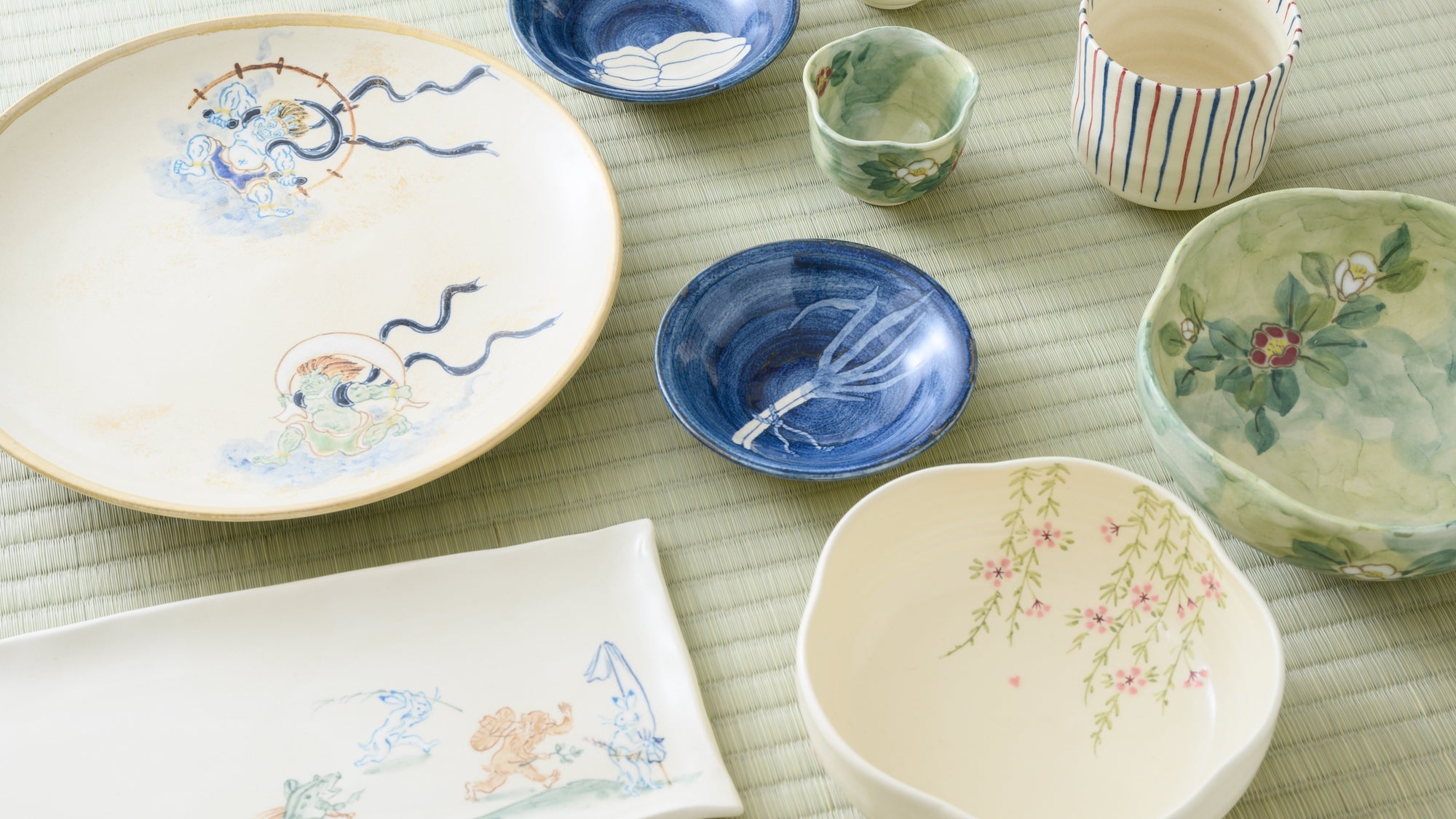
Crafts
Kyo ware and Kiyomizu ware, collectively known as Kyo-yaki and Kiyomizu-yaki, are celebrated pottery styles from Kyoto. Known for their vibrant designs, finely sculpted forms, and dedication to handcrafted detail, these wares reflect Kyoto’s distinctive sense of beauty and artistic refinement.
Defined by a long-cultivated diversity, Kyo ware and Kiyomizu ware have drawn on techniques and styles from pottery traditions across Japan, evolving into a richly expressive and distinctly Kyoto art form. Recognized as a Traditional Craft of Japan in 1977, they continue to be cherished for their cultural depth and everyday appeal.
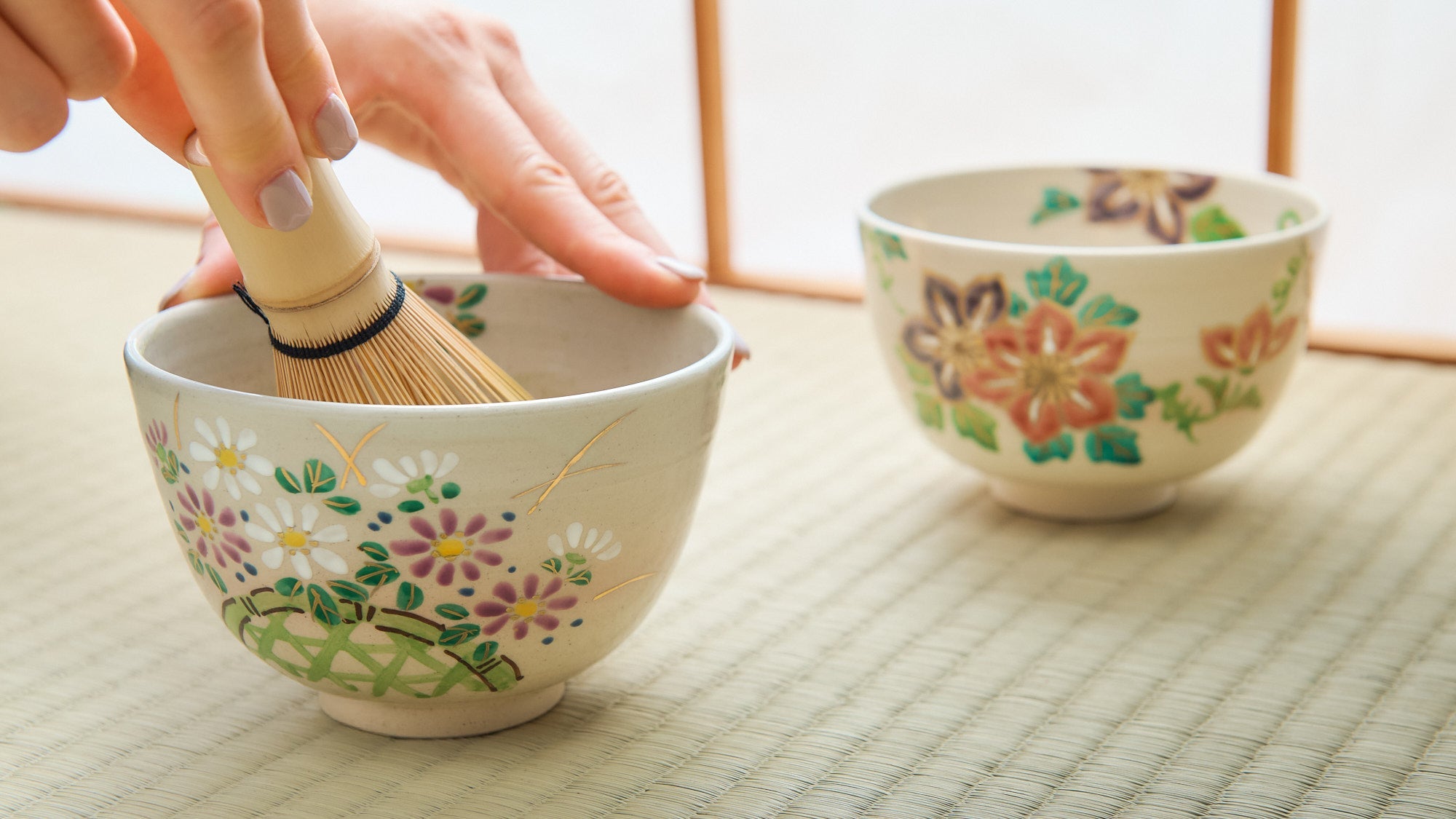
Choose options













Estimated Shipping Widget will be displayed here!
Sakazuki
We have curated a collection of exquisite sakazuki sake cups from all over Japan, designed to enrich the blissful experience of savoring your favorite sake. The term "sakazuki" refers to any sake cup, though it traditionally describes a flat, plate-like vessel, representing the oldest style. Holding the cup delicately with both hands—grasping its sides and bottom—embodies the essence of Japanese sake culture.
Sakazuki cups typically contain just a few sips, and the beautifully adorned ones are treasured by collectors for their aesthetic appeal. Using a stunning sakazuki for a special sake, a celebratory occasion, or when hosting guests, will create an unforgettable moment.
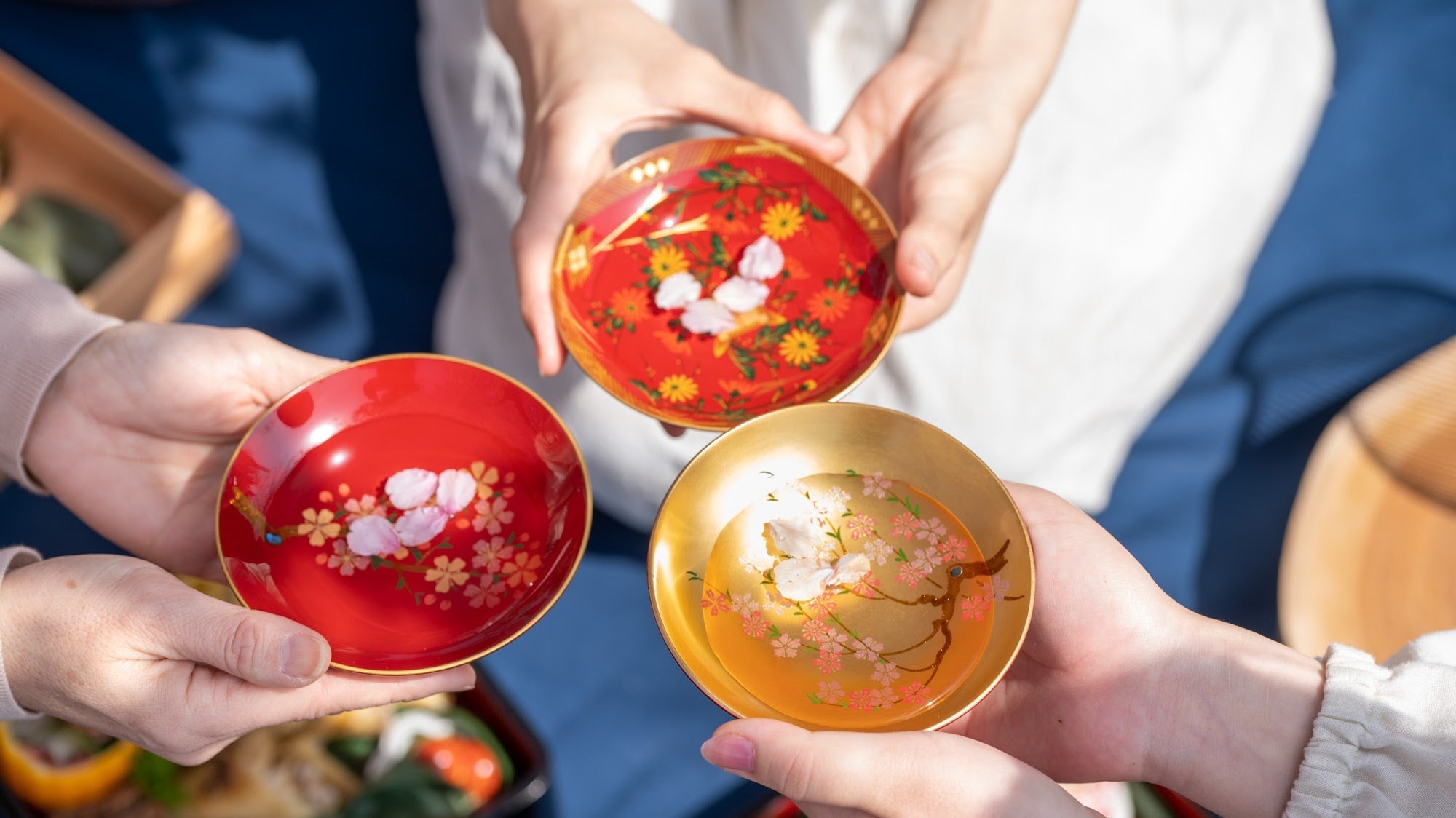
Stoneware
From our tableware and dinnerware collection, we have gathered stoneware products that fully display the warmth of the material. We hope that you will welcome these pieces, which are loved by people of all ages and regions, into your home.
